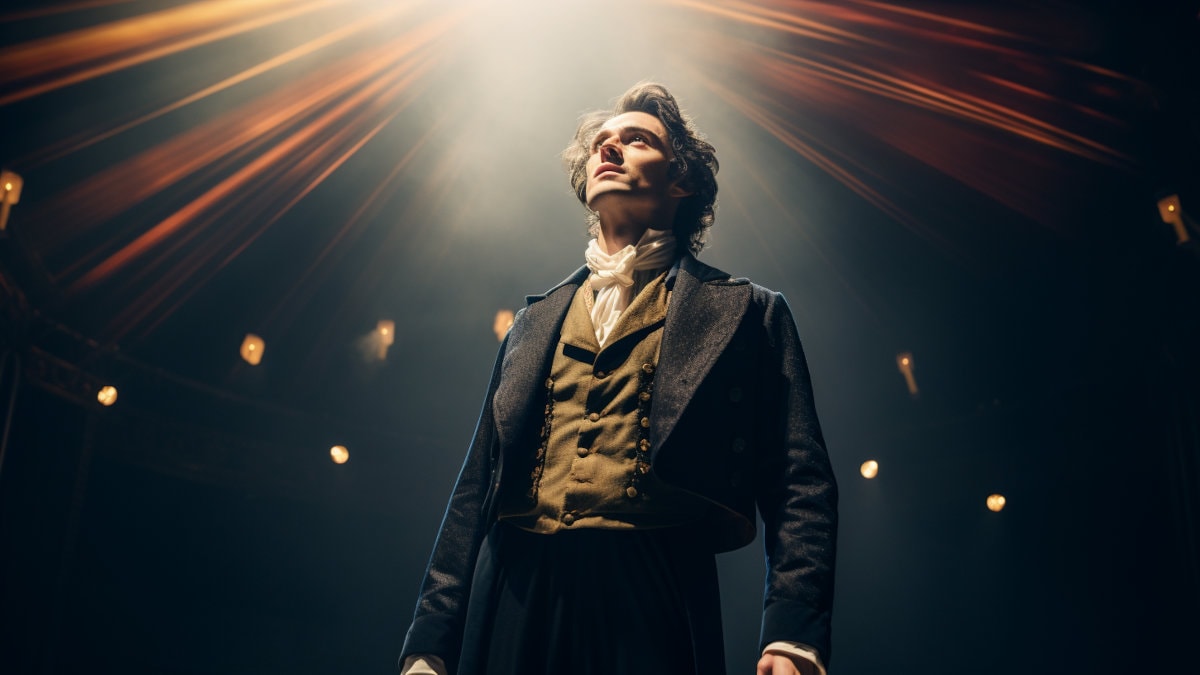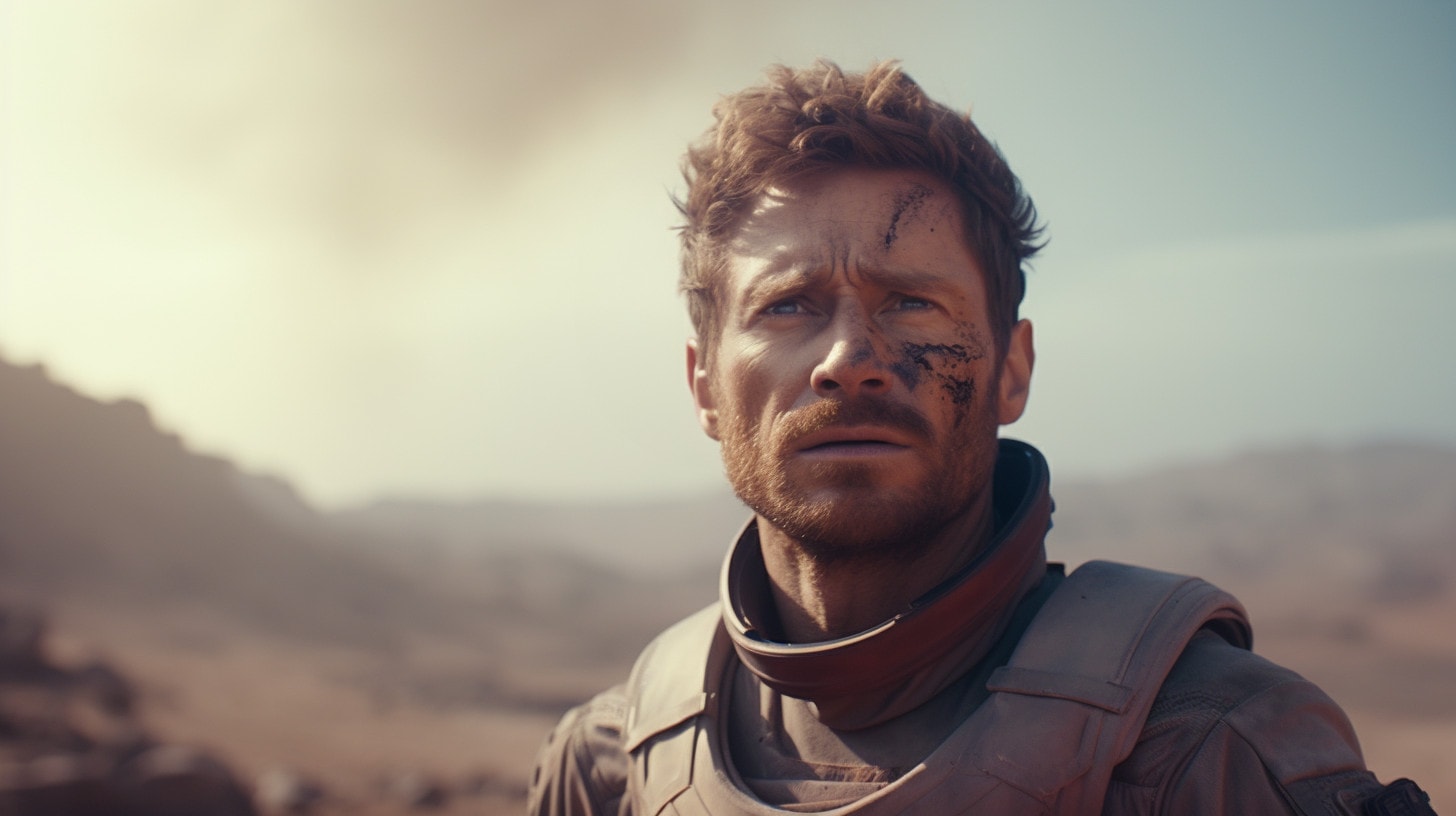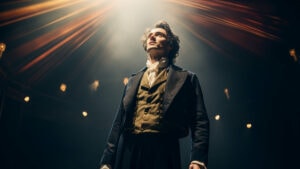Subtext is by far the most important thing an actor can focus on, and it’s the key to giving complex and three-dimensional performances. It’s not always present in every scene, but ignoring or missing it when it is present is a recipe for disaster.
Subtext is the unspoken, hidden meaning behind a characters dialogue or actions. It’s the difference between what the character says or does, and what they truly mean. Effective use of subtext adds depth to a performance and allows the audience to read between the lines, creating a more engaging experience.
In this blog post, I’ll be going over everything you need to know about subtext including why it’s so important, how to identify it and how to effectively implement it into your performances.
Table of Contents
Why Subtext is So Important for Actors
Subtext is important because ignoring it will result in a performance that doesn’t reflect the reality of the moment. Konstantin Stanislavski, one of the original minds behind subtext, said that only about 10% of what lies in our heads is spoken.
The remaining 90% is what lies beneath the text. And if this makes up 90% of what a character is thinking, an actors performance can never be truthful without it, because an actor that ignores the subtext will be ignoring 90% of the role.
Take Control of Your Acting Career
Learn to build a consistent and sustainable career in the entertainment industry!
Subtext also allows actors to portray more complex emotions. While people do experience simple emotions such as happiness, sadness or anger. In reality, emotion is often a lot more complex. Subtext therefore allows actors to portray these emotions in a more truthful light.
How To Identify Subtext

Now that we know how important subtext is, the idea of identifying it may seem daunting, but it’s not that hard once you know how.
It’s important to note that subtext doesn’t always lie within the dialogue. Sometimes, if you’re lucky, the writer will have given crucial clues throughout. Here are some great ways of identifying subtext using real-world examples:
1. Find the Objective
By far the easiest way to understand subtext is to understand the character, their objectives, and their counter-objectives. I’d highly suggest reading my blog post on Given Circumstances as it goes in depth into the idea of objectives, counter-objectives, and many other aspects of character development.
Knowing what the character wants as well as what’s in their way will allow you to find the subtext of the scene, because objectives and subtext are often linked. For example, in season 1 episode 9 of the Netflix original, The Crown, Porchey takes Jean out to a fancy restaurant in central London.
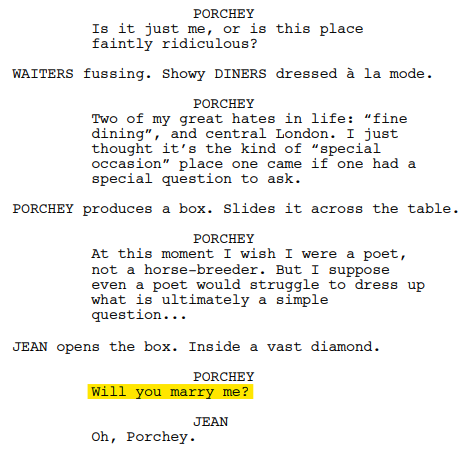
Porcheys objective in this scenario is to ask Jean to marry him. So throughout the dinner, as he’s saying things such as, “Is it just me, or is this place faintly ridiculous”, and then “At this moment I wish I were a poet, not a horse breeder.” The objective and subtext are intertwined.
We know that as he’s saying these things, he’s trying to pluck up the courage to ask Jean to marry him, and this is therefore the subtext.
2. Scene Descriptions & Action Lines
It’s important when reading a script to not only read the dialogue but also pay close attention to the scene descriptions, also known as actions. These descriptions will provide key insights into the physical action of the character, but they’ll often provide clues into the underlying context or subtext of a scene.
A great way of identifying these key descriptions is by taking note of action lines that contradict the dialogue of the character. For example, In season 3 episode 13 of Breaking Bad, Walter has a somewhat confrontational meeting with Gus.
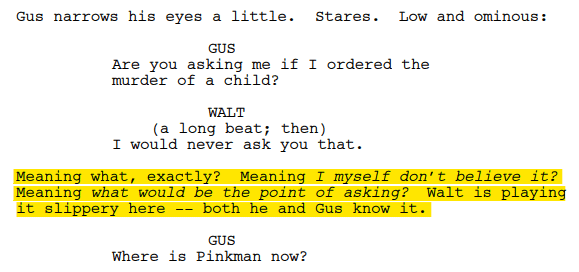
Walter is saying that he’d never ask Gus if he sent the order. But the subtext clearly shows that Walter doesn’t really know what he thinks. Sure, he’d never ask Gus if it was him, that doesn’t help him achieve his objective. But that doesn’t mean he doesn’t think he did it.
This subtext also serves a purpose for Gus, because in this moment Gus can sense what Walter is saying. So when he asks “Where is Pinkman now?” He’s making the choice to not be confrontational.
3. Parentheticals
Subtext will often be given within a parenthetical before a line of dialogue. These can either state the physical action of the character such as who they’re speaking to, what they’re talking about or where they’re looking, but they can also state the emotional context of a line.
In the Pilot episode of the political drama, Designated Survivor, Penny calls her parents. Her dad then says, “leave us alone!”

Ignoring the parenthetical before this line, you’d think that Kirkman is angry, maybe he’s having an important conversation with his wife and they need time alone. But the writer has included a parenthetical that states, “playful.” This completely switches the emotional context of the line.
Of course, it’s hard to decide what his objective is from this small excerpt of the scene. You’ll need to read the rest of the scene to understand that. But going of this excerpt alone, there are a few options. Perhaps he doesn’t actually want to be left alone, he’s genuinely just playing around, and so his objective is to have fun with his daughter.
Or perhaps he really does want to be left alone, but he doesn’t want to get angry with his daughter. This would make his objective to be left alone, and the counter-objective would be his daughter, but the type of person he is changes the way he goes about achieving that objective.
How To Use Subtext in Acting
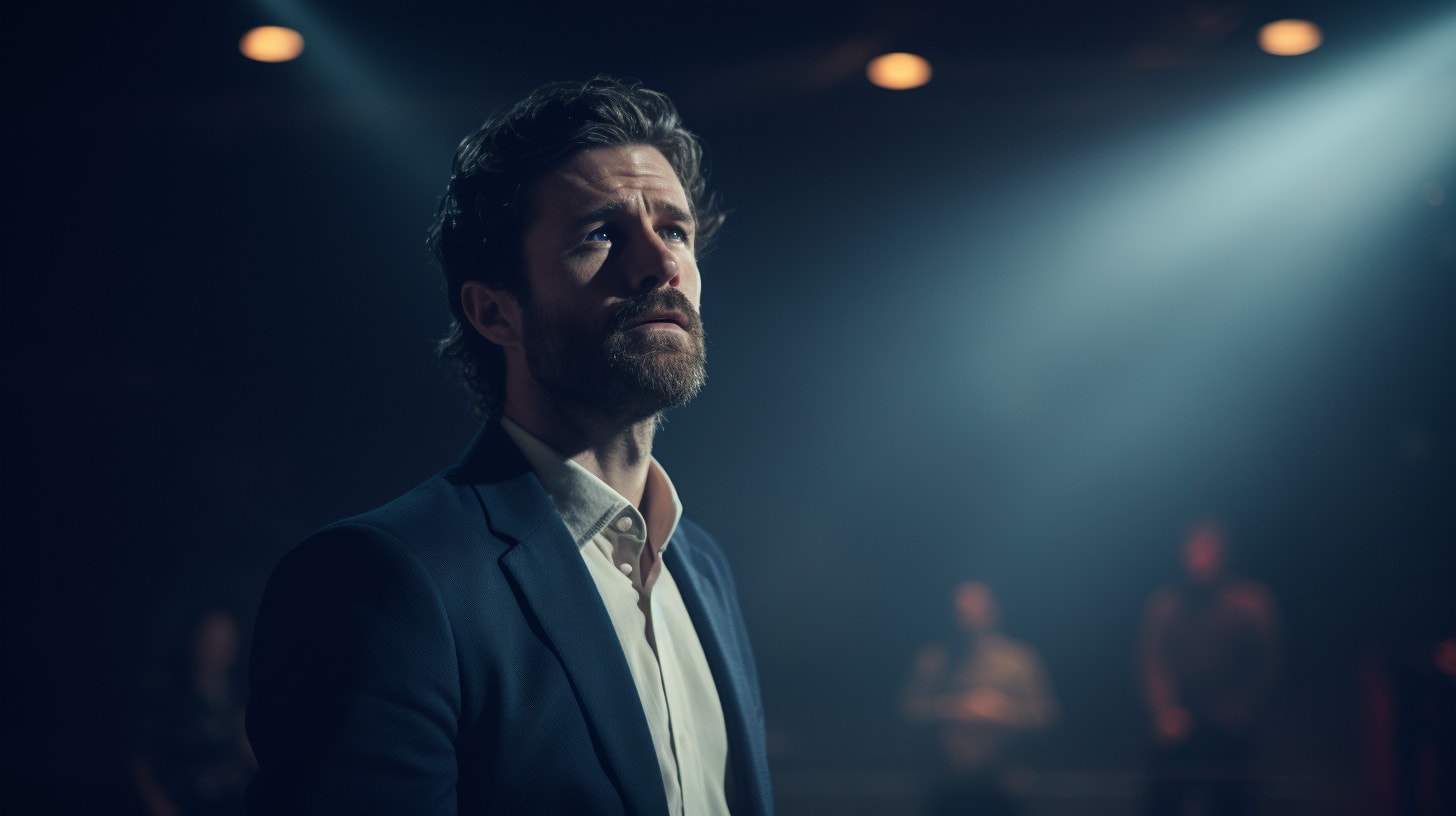
So you know what the subtext of the scene is. But how do you use it? How do you implement it into your acting? You don’t. Let me explain. Subtext is what’s unspoken. It’s inferred, rather than told. So as an actor, you don’t show the subtext, you allow it to show itself. You do this by playing the objective.
By working towards your objective, and fighting against your counter-objective, the subtext will automatically be displayed to those that notice it.
Using Subtext for Character Development
It’s important to note that an actor must make note of subtext when developing their characters. When an actor starts the character development process, they start by mining the text for useful information that they can use to create the foundational layer of their character.
But by taking the script at face value and completely ignoring the subtext, you could be misinterpreting that information. Of course, everything’s up for interpretation, but it’s important to choose to interpret that information in that way, rather than failing to notice it in the first place.
If a character says, “I’m the second best ping pong player in the world.” Is that true, or are they just trying to be funny? If the character says they can bench 500 lbs, are they telling the truth or are they exaggerating? Are they being sarcastic?
If the character says, “I’m fine.” Are they actually fine, or are they just saying that? Do they just want to be left alone? Do they want to make it obvious that they’re angry at the other person without outright saying it? Don’t take everything at face value, always find the subtext.


